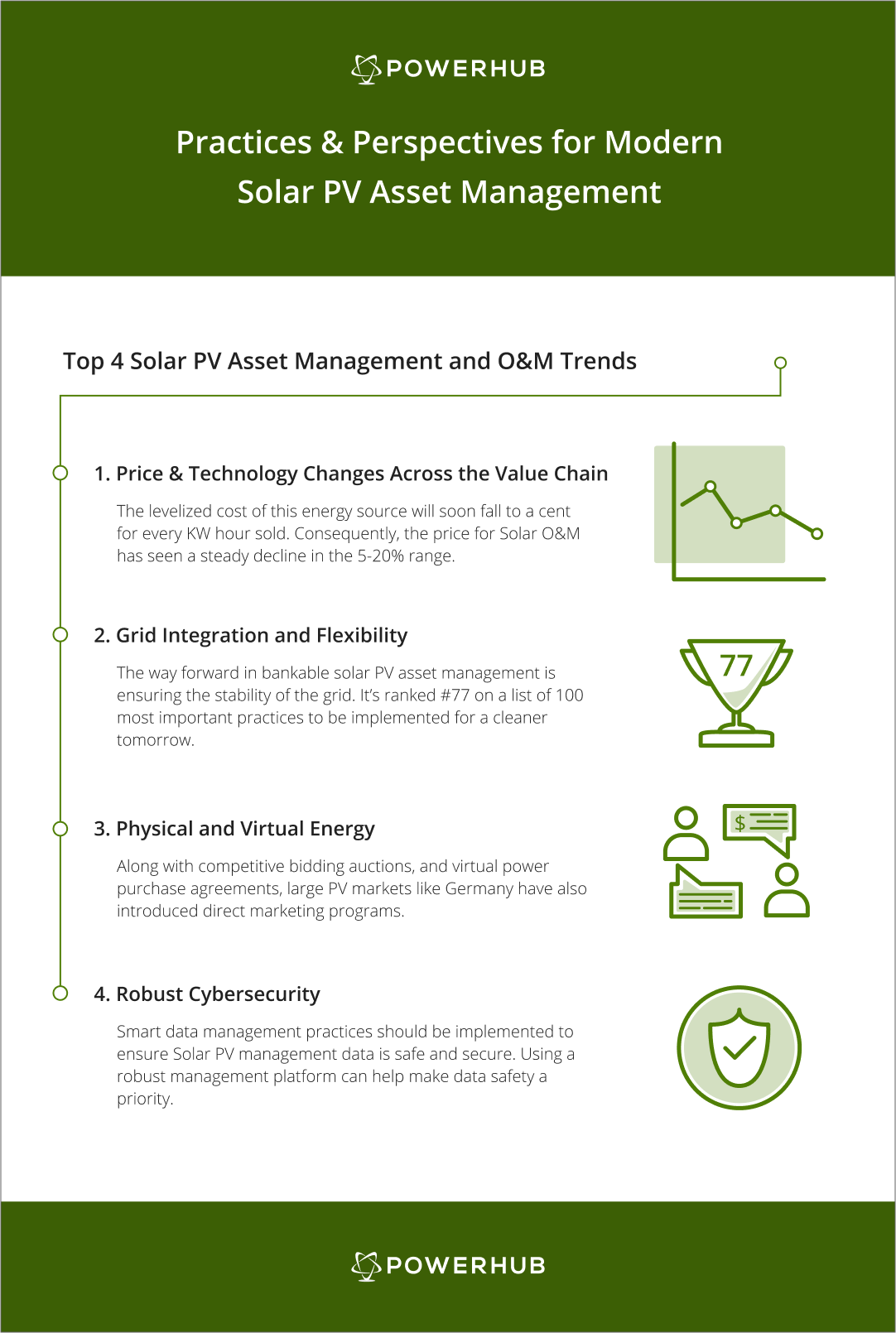Modern solar PV asset management is a mix of various trends that have emerged with the maturation of clean energy. As we moved past the notion, ‘solar power is a fad’, we gave way to an industry that has tremendous potential.
The sheer number of giant solar PV projects is increasing day by day. Within the U.S., projects that are greater than 120 MW are estimated to grow by 200% from 2019 to 2021. Therefore, growing portfolio sizes is a definite trend affecting solar PV asset management and O&M.
So, the question remains, what trends are giving way to mega solar projects around the world?
Top 4 Solar PV Asset Management and O&M Trends

Price & Technology Changes Across the Value Chain
Solar PV’s prices are falling drastically across the globe. According to one expert, its levelized cost will soon fall to a cent for every KW hour sold. This decline is passing along the value chain, with O&M prices falling year over year.
Estimates show that O&M prices for solar PV asset management have fallen between the 5-20% range. And with its clean energy market thriving, India is leading the way for the lowest maintenance prices.
With more price pressure now falling on every player in the solar management services’ value chain, focus shifts to technology. What is the rate of innovation at every stage of this chain? Are O&M providers leveraging the best maintenance devices and software in the market?
The goal is to provide the best services, while operating at a profit. Therefore, innovation that leads to investment is the best path forward for all stakeholders in the PV market.
Grid Integration and Flexibility
We’ve previously talked in great detail about grid flexibility. But it’s worth a mention here. The way forward in bankable solar PV asset management is ensuring the stability of the grid. For instance, studies are suggesting that in regions like Japan and UK, penetration of solar assets is impacting grid stability.
Consequently, network support and flexibility are some best practices that must be leveraged to ensure solar asset management services reap results. And make majority renewables a reality.
Physical and Virtual Energy
Energy trading has become a hot topic in solar asset management services recently. Gone are the days when solar power was only sold to utilities and corporations via corporate power purchase agreements (PPA).
Along with competitive bidding auctions, and virtual power purchase agreements, large PV markets like Germany have also introduced direct marketing programs. With these innovative models, renewable energy producers can sell energy to third parties at market price. This model stands in stark contrast to simply selling to the grid for the tariff.
Such systems make energy trading easier, with minimal need for legislative support.
Better Cybersecurity
The risk of cybercrimes, and hacking into solar management software is real. And the more the industry grows, the higher will be the need for robust cybersecurity.
Just as energy is not only sold in physical markets, solar PV asset management data should not be stowed away in file cabinets. Smart software are now equipped with advanced security measures that protect all performance data on the cloud.
They assess trends, visualize patterns, and act as central hubs for information. All the while being integrated with SCADA monitoring systems to push and pull information as and when needed by various stakeholders.
Having your solar portfolio’s most important files in one place, where access can be limited or granted is a crucial way to leverage best practices for modern solar PV asset management.




